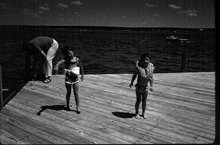
“Johannes Kepler presented an explanation of the principles involved in the convergent/divergent lens microscopes and telescopes. In the same treatise, he suggested that a telescope could be constructed using a converging objective and a converging eye lens and described a combination of lenses that would later become known as the telephoto lens. He discovered total internal reflection, but was unable to find a satisfactory relationship between the angle of incidence and the angle of refraction”
Prague, 1951
Behind the velvet curtain of the camera, he was able to obtain an oblique relation to objects before him. He saw differently, repositioned himself with regard to the object in such a way that he could see it purely, as form, as light and shadow. While it lost a certain elemental materiality, it gained an ineffable quality of spirit. All the world shifted slightly off the direct approach, into the poetic.
New York, 1987
She knew that when she translated the language of the Caprock into the unfamiliar tongue of a floating city, that she would not lose the fundamental orientation of hope, for what was hope but a romanticized notion of possibility, a place other than the here, the past and the future forever synthesized into a highest term? That is how it is possible that they connected at all, through the oblique. It is in the context of the everyday and quotidian that people meet and talk and make love and live lives; in the realm of the oblique, time does not exist, as neither do meeting or talking or making love.
As the mathematician said, “a language not for time, but for all time.”



